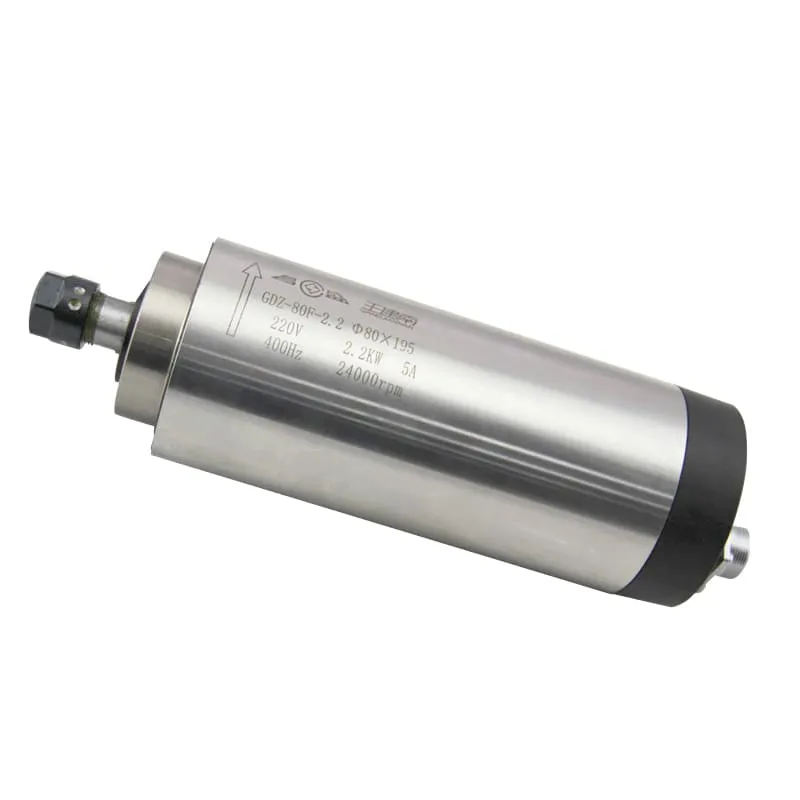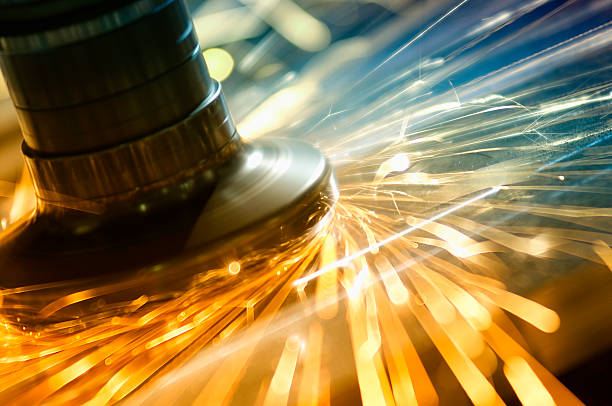How Accurate is a CNC Machine?
CNC (Computer Numerical Control) machines are known for their high precision and accuracy. However, the exact level of accuracy can vary depending on several factors. This comprehensive guide will explore the accuracy of CNC machines, factors affecting it, and how it compares across different types of CNC equipment.
Understanding CNC Machine Accuracy
Accuracy in CNC machining refers to how closely the finished part matches the intended design. It’s typically measured in terms of tolerances, which specify the acceptable range of deviation from the nominal dimensions.

A typical CNC machine setup
Typical Accuracy Ranges
The accuracy of CNC machines can vary widely, but here are some general ranges:
- High-Precision CNC Machines: ±0.0001″ to ±0.0005″ (0.0025mm to 0.0127mm)
- Standard CNC Mills and Lathes: ±0.001″ to ±0.005″ (0.0254mm to 0.127mm)
- CNC Routers: ±0.002″ to ±0.01″ (0.0508mm to 0.254mm)
- Large-Scale CNC Machines: ±0.005″ to ±0.03″ (0.127mm to 0.762mm)
Factors Affecting CNC Machine Accuracy
- Machine Design and Construction
- Rigidity of the frame
- Quality of components (e.g., ball screws, linear guides)
- Thermal stability
- Tooling
- Quality and condition of cutting tools
- Tool deflection under cutting forces
- Material
- Type of material being machined
- Material consistency and homogeneity
- Programming and Operation
- Accuracy of the CAD model and CAM toolpaths
- Skill of the machine operator
- Environmental Factors
- Temperature fluctuations
- Vibrations in the workspace
- Maintenance
- Regular calibration and adjustment
- Proper lubrication and cleaning
Accuracy vs. Precision vs. Tolerance
Understanding these related but distinct concepts is crucial:
- Accuracy: How close a measurement is to the true value
- Precision: The repeatability of measurements
- Tolerance: The acceptable range of variation
A CNC machine can be precise (consistently making the same part) without being accurate (if that part doesn’t match the intended dimensions).
Improving CNC Machine Accuracy
- Regular Calibration: Use precision measurement tools to check and adjust machine alignment
- Temperature Control: Maintain a consistent temperature in the machining environment
- Vibration Dampening: Install the machine on a stable foundation and use vibration isolation techniques
- Tool Management: Regularly inspect and replace cutting tools
- Software Optimization: Use high-quality CAD/CAM software and post-processors
- Operator Training: Ensure operators are well-trained in machine setup and operation
CNC Machine Types and Their Accuracy
CNC Mills
- High-end mills can achieve tolerances of ±0.0001″ (0.0025mm)
- Standard mills typically work within ±0.001″ to ±0.003″ (0.0254mm to 0.0762mm)
CNC Lathes
- Precision lathes can achieve tolerances of ±0.0002″ (0.005mm)
- Standard lathes typically work within ±0.001″ to ±0.005″ (0.0254mm to 0.127mm)
CNC Routers
- High-quality routers, like those using a 2.2KW ER20 Air-Cooled Spindle, can achieve tolerances of ±0.002″ to ±0.005″ (0.0508mm to 0.127mm)
- Larger routers may have tolerances of ±0.005″ to ±0.01″ (0.127mm to 0.254mm)
Large-Scale CNC Machines
- Machines for large parts, using components like 3.5KW ER20 Air-Cooled Spindles, typically have tolerances of ±0.005″ to ±0.03″ (0.127mm to 0.762mm)
Accuracy in Different Materials
- Metals: Generally allow for tighter tolerances
- Plastics: Can be affected by thermal expansion, potentially reducing accuracy
- Wood: Grain structure and moisture content can impact accuracy
- Composites: May require special considerations due to their layered structure
FAQ
1. How does CNC machine accuracy compare to manual machining?
CNC machines generally offer higher accuracy and consistency compared to manual machining, especially for complex parts or large production runs.
2. Can a CNC machine maintain the same accuracy throughout a long production run?
While CNC machines are designed for consistency, factors like tool wear and thermal expansion can affect accuracy over long runs. Regular checks and adjustments may be necessary.
3. How often should a CNC machine be calibrated?
The frequency of calibration depends on usage, but many shops calibrate their machines monthly or quarterly. Some high-precision operations may require daily checks.
4. What’s the most accurate type of CNC machine?
Precision grinding machines and jig borers are among the most accurate, capable of tolerances in the micron range. However, for most applications, standard CNC mills and lathes offer sufficient accuracy.
5. How does the accuracy of a CNC wood router compare to metal-cutting CNC machines?
CNC wood routers are generally less accurate than metal-cutting machines due to the nature of the material and the typical construction of wood routers. However, high-end wood routers can still achieve impressive accuracy for woodworking applications.
6. Can software compensation improve CNC machine accuracy?
Yes, many modern CNC controllers offer features like thermal compensation and tool center point management, which can improve accuracy by compensating for known sources of error.
Conclusion
The accuracy of CNC machines is a crucial factor in modern manufacturing, enabling the production of complex parts with high precision and consistency. While the exact level of accuracy can vary widely depending on the type of machine, its configuration, and the specific application, CNC technology generally offers superior accuracy compared to manual machining methods.
Understanding the factors that influence CNC machine accuracy is essential for manufacturers and machinists alike. From the initial machine design and construction to ongoing maintenance and environmental control, numerous elements contribute to the final accuracy of machined parts. By carefully managing these factors, it’s possible to achieve extremely tight tolerances and high-quality outputs.
It’s important to note that while CNC machines can achieve impressive accuracy, this capability comes with certain trade-offs. Higher precision often requires more expensive equipment, more rigorous maintenance routines, and potentially slower production speeds. Therefore, manufacturers must carefully balance their accuracy requirements with other considerations such as cost and production volume.
The continuous advancement of CNC technology is pushing the boundaries of what’s possible in terms of machining accuracy. Innovations in machine design, control systems, and metrology are enabling ever-tighter tolerances and more complex part geometries. This trend is opening up new possibilities in industries such as aerospace, medical device manufacturing, and precision engineering.
However, it’s crucial to remember that achieving and maintaining high accuracy with CNC machines is not just about the equipment itself. It requires skilled operators, well-maintained tools, optimized programming, and a controlled environment. The human element remains critical in leveraging the full potential of CNC technology.
In conclusion, the accuracy of CNC machines is a key factor in their widespread adoption across various industries. While the specific level of accuracy can vary, CNC technology offers the potential for extremely precise manufacturing when properly implemented and maintained. As the technology continues to evolve, we can expect to see even greater levels of accuracy and precision in CNC machining, further expanding the possibilities in manufacturing and engineering.

